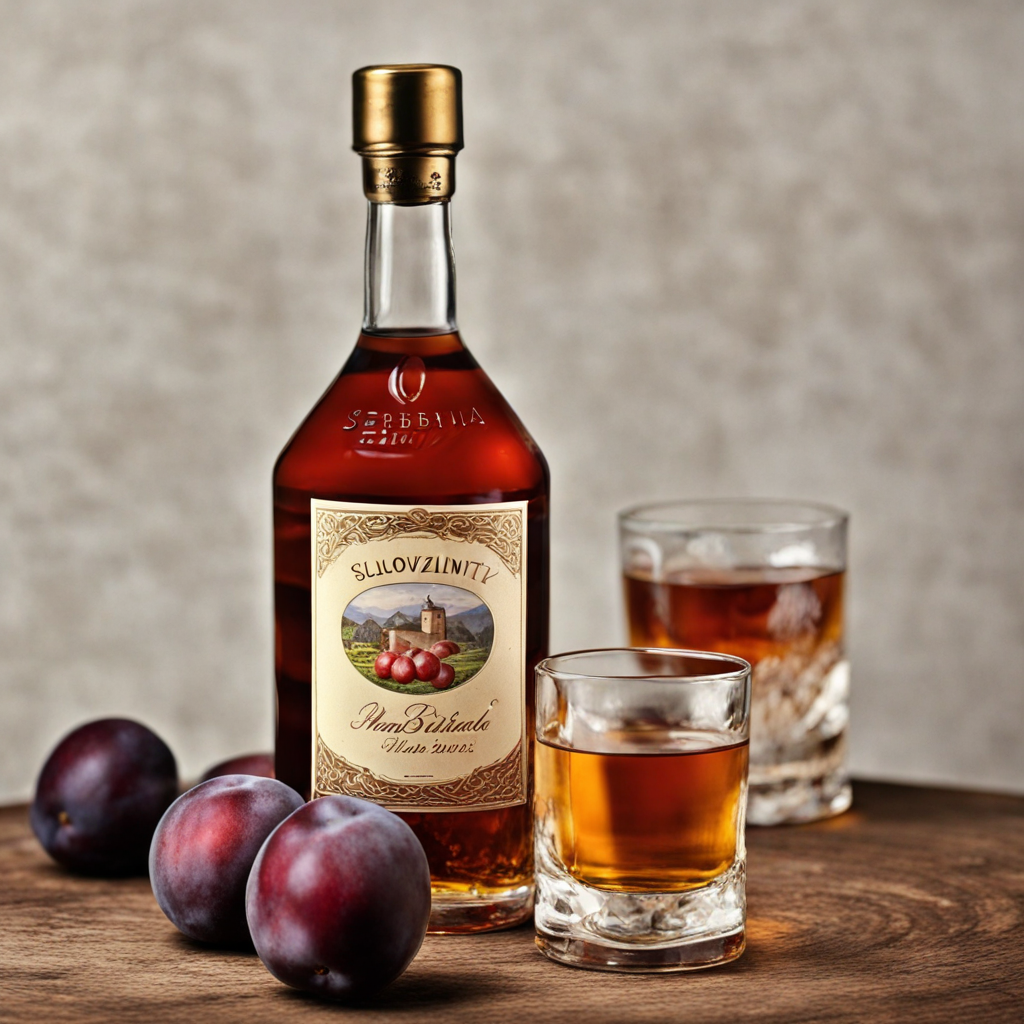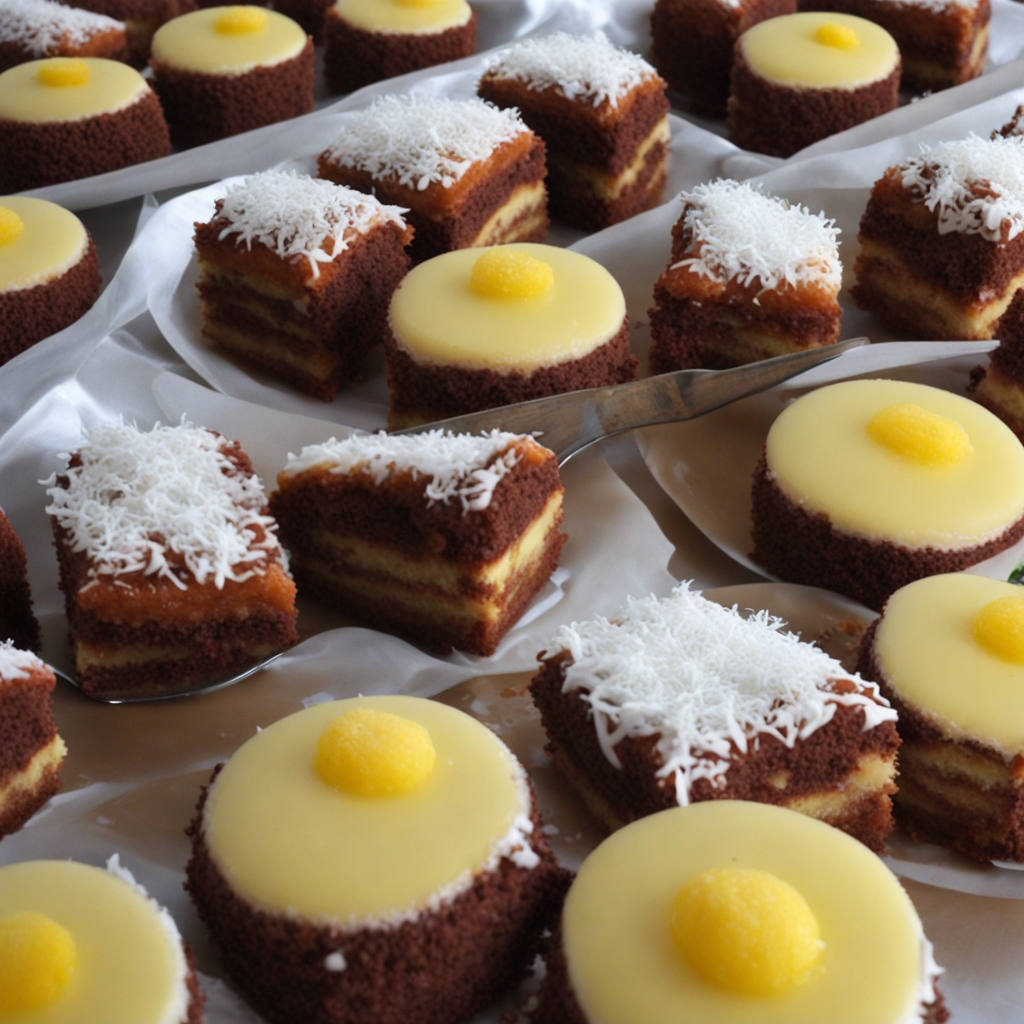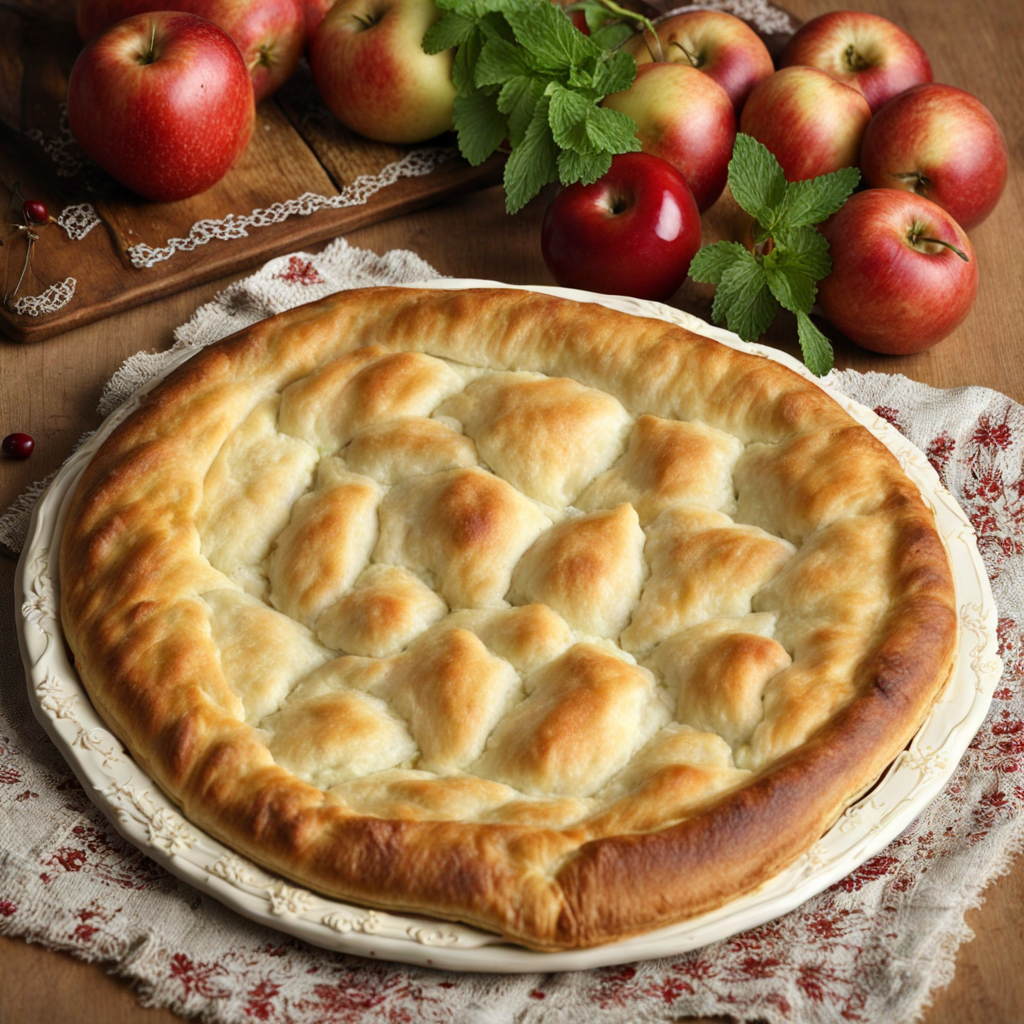Slivovitz
Slivovitz is a traditional Serbian fruit brandy that captures the essence of the country's rich agricultural heritage. Made primarily from plums, this potent spirit undergoes a meticulous fermentation and distillation process, resulting in a drink that is both aromatic and complex. The plums used are often local varieties, such as the famous 'Stanley' or 'Čačanska Lepotica,' which contribute to the distinctive flavor profile. With its golden hue and enticing scent, Slivovitz invites you to explore the depths of Serbian culture through its vibrant notes of ripe fruit, subtle spices, and a hint of earthiness that reflects the land it comes from. Upon tasting Slivovitz, you are greeted with a bold yet smooth experience, where the sweetness of the plums balances perfectly with the spirit's warmth. The initial sip may reveal hints of vanilla and caramel, followed by a tartness that lingers on the palate. The alcohol content, typically ranging between 40% to 50%, adds to the intensity, making it a perfect aperitif or a companion for hearty meals. In Serbia, it is often enjoyed in small shots, accompanied by traditional snacks such as cured meats, cheeses, or fresh bread, enhancing the overall tasting experience. Slivovitz is not just a drink; it is a symbol of Serbian hospitality and celebration. It is often served during festive occasions, family gatherings, and special events, where it brings people together in a spirit of camaraderie and joy. The brandy can also be aged in wooden casks, which adds additional layers of flavor, making each bottle unique. Whether you are sipping it straight, using it in cocktails, or incorporating it into desserts, Slivovitz promises an unforgettable journey into the heart of Serbia's culinary landscape.
How It Became This Dish
Šljivovica: A Journey Through Time and Tradition Origin and Historical Roots Šljivovica, a traditional Serbian plum brandy, is more than just a beverage; it is a cultural emblem that embodies the spirit and history of the Serbian people. The name "Šljivovica" derives from the Serbian word for plum, "šljiva," which reflects its primary ingredient. The origins of this potent spirit trace back to the rural landscapes of Serbia, where wild plums flourished and were cultivated by local farmers. The earliest mentions of distilling fruit spirits in the Balkan region date back to the Middle Ages, likely influenced by the introduction of distillation techniques from the Mediterranean, particularly through the trade routes established by the Byzantine Empire. However, the production of Šljivovica as we know it today gained prominence in the 19th century. During this period, Serbian households began to craft their own versions of this spirit, often as a means of preserving the abundant plum harvest. It soon became a staple in households, particularly in rural areas, where it was produced in pot stills known as "kazani." Cultural Significance Šljivovica holds a profound place in Serbian culture, symbolizing hospitality, celebration, and resilience. It is often the first drink offered to guests, embodying the Serbian ethos of warmth and generosity. The act of sharing Šljivovica is a ritual that fosters connections, whether during family gatherings, weddings, or holidays. The phrase "A guest in the home brings luck" resonates deeply within Serbian society, and offering a glass of this spirit is a gesture of goodwill. Moreover, Šljivovica is intertwined with numerous customs and traditions. For instance, during the harvest season, families often come together to distill their plums, turning the process into a communal event. This not only strengthens familial bonds but also reinforces cultural identity as each family has its unique recipe and method of production, passed down through generations. In addition to its social significance, Šljivovica also features prominently in Serbian folklore and literature. It finds its way into songs, poems, and proverbs, often representing a connection to the land and the simplicity of rural life. The spirit is seen as a symbol of Serbian endurance, particularly during times of hardship, from the Ottoman occupation to the Yugoslav wars. Development Over Time As Serbia underwent political and social transformations throughout the 20th century, the production and perception of Šljivovica evolved. Following World War II, the establishment of the socialist regime brought about changes in agricultural practices, which affected plum cultivation and the production of Šljivovica. However, the spirit remained a beloved staple, and the government even promoted its production as a means of boosting the economy. In the late 20th century, the rise of global interest in craft distilling and artisanal products led to a renaissance of traditional Serbian spirits, including Šljivovica. Distilleries began to pop up across the country, with producers focusing on quality, authenticity, and traditional methods. This renewed interest also sparked a movement among local farmers to cultivate rare plum varieties, such as the "Stanley" and "Prunus domestica," which are prized for their flavor and sugar content. The turn of the millennium saw a surge in the international market for Šljivovica. As more people became interested in traditional spirits, Serbian producers began exporting their products, sharing their rich heritage with the world. The spirit gained recognition at various international competitions, where it was celebrated for its unique flavor profile—often characterized by a harmonious balance of sweetness and acidity, along with a fragrant aroma of ripe plums. Regional Variations and Modern Craftsmanship Today, Šljivovica is produced in various regions of Serbia, each contributing its own unique twist to the classic recipe. The town of Valjevo is renowned for its high-quality Šljivovica, often made using traditional pot stills, while the regions of Šumadija and Vojvodina also boast their distinct styles. The variations may include different aging processes, such as maturation in oak barrels, which imparts additional complexity to the flavor. Modern artisans have taken the craft of Šljivovica production to new heights, experimenting with techniques and flavor infusions while respecting traditional methods. Some distilleries have begun incorporating local herbs and spices, creating unique blends that appeal to contemporary palates. This blend of tradition and innovation has helped Šljivovica maintain its relevance in today's culinary landscape. In recent years, the Serbian government has also recognized the importance of Šljivovica as a cultural heritage product. In 2011, the spirit received the status of "Geographical Indication," similar to the protections granted to other famous spirits like Scotch whisky or French cognac. This designation helps to preserve the authenticity of the product while promoting its unique identity on the global stage. Conclusion: A Spirit of Resilience and Community Šljivovica is more than just a drink; it is a vessel of history, culture, and community. From its humble beginnings as a means of preserving plums to its status as a cherished symbol of Serbian hospitality, it has woven itself into the very fabric of Serbian life. Through the centuries, it has witnessed the trials and triumphs of the Serbian people, serving as a reminder of their resilience. As Serbia continues to evolve, so too does Šljivovica, adapting to modern tastes while honoring its rich heritage. It encapsulates the essence of the land and the spirit of its people—a true testament to the enduring power of tradition, community, and the simple joy of sharing a drink with friends and family. Whether sipped neat, used in cocktails, or paired with traditional dishes, Šljivovica remains a celebration of life, love, and the enduring connection to one’s roots.
You may like
Discover local flavors from Serbia







